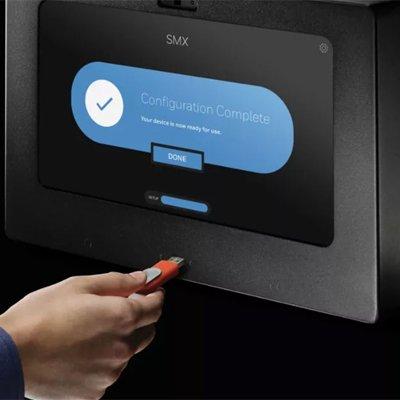How is expansion of video storage capabilities impacting security?
Editor Introduction
Video storage has come a long way since rooms full of VCRs stored video from an entire system of cameras. Video storage equates to data storage, and there are multiple options ranging from hard disk storage to the cloud to storage on each individual camera using SD cards. Increasingly, cloud-based storage is an attractive option to store video footage conveniently and safely. We asked this week’s Expert Panel Roundtable: How is expansion of video storage capabilities impacting the security industry?
The falling prices of storage space have really opened the door for additional use cases for continuous recording both in the cloud and on-prem. While cloud has historically been more expensive than local recording, intense competition in the cloud space has pushed down the price in this area, to the benefit of cloud users. Advancements in hardware development — in particular with the growing capacity of SD cards — are creating new markets and capabilities for edge recording and storage. This changing paradigm from a centralised recording architecture to primary recording/storage on the camera’s SD card introduces new challenges and opportunities for the security industry in terms of managing storage, handling redundancy, and ensuring the integrity of stored video.
Video storage requirements are uniquely difficult to predict. There are uncontrollable factors, such as lighting and scene activity that can have a large impact on video bitrates. For consumers with strict retention requirements, this is a significant problem, which can now be managed with newer technologies. Using predictive storage analytics, which can monitor camera recording characteristics and understand system retention policies, can predict if the storge is sufficient to meet the current or future retention policies. If the VMS predicts there is insufficient space, notifications can be provided to add more storage or to adjust camera settings to meet retention requirements. Additionally cloud storage allows flexible expansion of storage space for video. Cloud storage can be used to compensate when storage requirements change or the on-prem storage has been exceeded. As cloud storage prices are coming down, and bandwidth more affordable and available, cloud storage is a viable option for many consumers.
Video expansion provides better security of the evidence. If all recordings are stored on-site on an NVR and that device is stolen, so are the recordings. This is not without challenges because video needs to be streamed to the cloud so the internet connection must be dependable and monitored so that there are no glitches and when there are that they are promptly fixed. Therefore, having software that can monitor that recordings are where you expect, be it on the local appliance, in the cloud, or synchronised between the two, is crucial as well.
One word: analytics. As AI-enabled analytics become more accessible and increasingly more accurate than ever before, every piece of data has a potential use for either security purposes, business intelligence, or improving operational efficiency. Enterprises are overseeing massive amounts of data, as there is always new information to be gleaned once analysis has been performed. For instance, loss prevention retail analytics are becoming increasingly more common, making organisations more aware of their security gaps. AI analysis can also preempt security breaches by recognising patterns from previous data and being able to alert the right parties. Basically, enhanced storage capabilities mean enhanced analysis capabilities, resulting in the security industry being more valuable, prepared, and proactive than ever before.
The expansion of video storage capabilities has brought about transformative changes in the video surveillance market within the banking industry in particular. One significant effect of the increased video storage capacity is the ability to retain video footage for longer periods. With the availability of affordable and high-capacity storage solutions, banks can now comply with regulatory requirements or internal policies that dictate extended retention periods. This longer retention capability allows for more comprehensive forensic analysis and investigations, as security and fraud leaders can access historical footage for a wider range of incidents. It enables them to delve deeper into suspicious activities or incidents that may have occurred over an extended period. Scalability and flexibility are additional benefits stemming from the expansion of video storage capabilities. Cloud-based storage solutions provide banks with the flexibility to securely store and access video data from multiple locations while reducing the burden of managing on-premises storage infrastructure.
The expansion of video storage capabilities has brought about significant transformations in our industry. With larger storage capacities, systems can now store a greater volume of video footage for extended periods. This advancement benefits organisations that require extensive surveillance coverage, enabling them to retain footage for historical analysis, investigations, and evidence gathering. Cloud-based storage solutions are also more prevalent, offering scalability, remote accessibility, and redundant backup options. With cloud storage, there is no need for physical hardware upgrades, making it simpler to accommodate changing demands. Additionally, the cloud enables remote accessibility to video footage from any network-enabled location. This feature is invaluable for security professionals who need to monitor and review video footage from multiple sites or when they are off-site. It allows for real-time monitoring and prompt access to recorded footage, enhancing situational awareness and facilitating timely response measures.
Editor Summary
The price of video storage is falling, which provides new avenues of flexibility for system designers. Technology provides additional options to cater storage needs to the specific requirements of a system. However, predicting storage needs remains more an art than a science, given the many variables and uncontrolled factors that impact storage. Video data is also more valuable than ever, given the new ways enterprises are finding to leverage it for business information. More valuable data increases the value of storing and managing that data.
- Related companies
- Axis Communications
- Verint Systems
- Salient Systems
- ONVIF
- Arcules
- Ai-RGUS
- Related links
- Axis Communications CCTV software
- Axis Communications Digital video recorders (DVRs)
- Salient Systems CCTV software
- Verint Digital video recorders (DVRs)
- Verint CCTV software
- Axis Communications Network video recorders (NVRs)
- Salient Systems Network video recorders (NVRs)
- Verint Network video recorders (NVRs)
- Event Network video recorders (NVRs)
- ANPR Software CCTV software
- Control Software CCTV software
- Real Time Network video recorders (NVRs)
- Real Time / Timelapse Network video recorders (NVRs)
- IP Surveillance Software CCTV software
- Real Time / Timelapse / Event Network video recorders (NVRs)
- Management Software CCTV software
- Recording Software CCTV software
- Surveillance Software CCTV software
- Related categories
- Digital video recorders (DVRs)
- CCTV software
- Network video recorders (NVRs)
- View all news from
- Axis Communications
- Verint Systems
- Salient Systems
- ONVIF
- Arcules
- Ai-RGUS
Expert commentary
Maximising security and performance
DownloadGuide for HAAS: New choice of SMB security system
DownloadSecurity practices for hotels
DownloadAccess control system planning phase 2
DownloadThe key to unlocking K12 school safety grants
DownloadMilesight 4x5MP AI Multi-Directional Camera
Anviz AI-driven Fisheye Dome Network Camera
Honeywell SMX: Cybersecurity for Operational Environments





















